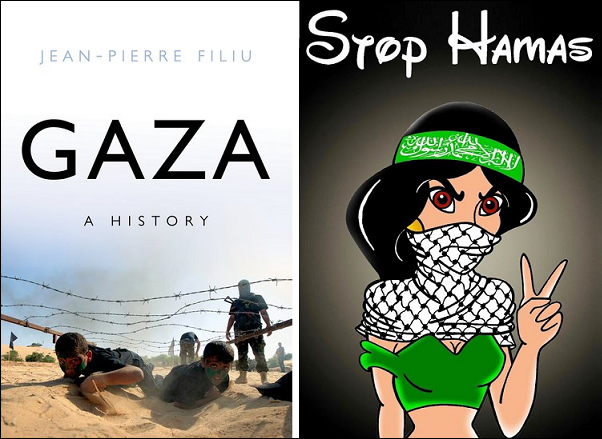[ by Charles Cameron — on the hopelessly interdisciplinary nature of reality ]
.
**
There really is no limit to the diversity of strands which go into a complex tapestry such as that of Gaza.
Jean-Pierre Filiu has written, and Hurst will shortly publish, his History of Gaza. Mark Levine, University of California, Irvine, sums up both the book and the timeliness of its publication in his blurb:
Anyone familiar with Jean-Pierre Filiu’s scholarship knows well his talent for taking complex historical processes and bringing their relevance for the present day to the front burner. Never have such skills been more needed than in addressing the still poorly understood history of Gaza. And Filiu succeeds admirably. Providing a wonderful synopsis of a century’s worth of history, his discussion of the more direct roots of the present violent dynamics, beginning with the “crushed generation” of the Six Day War and continuing through the travails of Gaza’s burgeoning hiphop scene, demonstrates just how historically and culturally rich remains this much abused land. A clear must-read for all those seeking to think outside the existing outdated prisms for studying history, and the future of Gaza and Palestine/israel writ large.
Considering the appalling reality of life in contemporary Gaza, a broader view of the current situation can only be taken from the perspective of history, with an attempt to set aside the disorientation, the horror and the hatred that the present situation has engendered. The ‘Gaza Strip’, as it is today, is not so much a geographical entity as the product of the tormented and tragic history of a territory where the majority of the population is made up of refugees who have already attempted to escape other torments, and other tragedies. Gaza’s borders have closed in on those who have fled there: the refugees born within the territory have been destined to remain confined within it, a fate they also share with all of those who have dreamed of leaving it. Neither Israel nor Egypt wanted the ‘Strip’ to exist: it is a territorial entity ‘by default’.
**
When Filiu wrote his earlier book, Apocalypse in Islam, he knew the realities of the situation demanded he research pop culture as well as classical sources in Qur’an and ahadith — and devoted 8 full-color pages to illustrations of 21 book-covers like these:
It’s not surprising, then, that he covers “the travails of Gaza’s burgeoning hiphop scene” in this one — but the point I wish to make is more general. If we are to grasp the complex realities of today’s and tomorrow’s trouble-spots, we need to be aware of trends that impinge on our disciplinary foci — “national security” and so forth — from an unprecenented array of other areas. Many of our nat-sec authors, bloggers and tweeters, bloggers, authors and pundits are aware of these areas — Dan Drezner, for instance,eploicates international affairs via a trendy meme in his — but it’s the use of such memes by those the analysts study that’s most significant.
Thus Daveed Gartenstein-Ross wrote a year ago regarding the Boston bombing:
Tamerlan listened to all kinds of music, including classical and rap, and used the email address The_Professor@real-hiphop.com. In fact, a few years ago he had planned to enter music school. AP (Apr. 23) shows that Tamerlan’s interpretation of Islam guided his eventual avoidance of music. Six weeks after Tamerlan had told Elmirza Khozhugov, the ex-husband of his sister, about his plans to enter music school, they spoke on the phone. Elmirza asked how music school was going. Tamerlan said that he had quit, and explained that “music is not really supported in Islam.”
and more recently in The Lies American Jihadists Tell Themselves on FP:
The first “homegrown” jihadist whom most Westerners learned about was John Walker Lindh, a young man who traveled to Afghanistan to join the Taliban prior to the 9/11 attacks. Lindh, before his turn toward radical Islam, used to post regularly on hip-hop message boards in the adopted persona of a racially-conscious black hip-hop artist (Lindh is white, from the wealthy northern California region of Marin County).
And thus also, Disney characters now show up in anti-Hamas propaganda… echoing an image of Samantha Lewthwaite we’ve seen here before:
The truth is, pop culture, high culture, scholarship, propaganda, truths, myths and lies are all hopelessly entangled in how we think about the world, and while our thoughts may prefer certain disciplines or “silos” to others, the world itself is no respecter of silos, but is interdiscipoinary to the core.
We had best get used to it.





